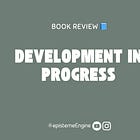Check out my latest AI newsletter: ε Pulse: Issue #17
Watch my latest short video essay: Error Could Mean Progress
[Talking Points]
🛒Salesforce’s New AI Strategy Acknowledges That AI Will Take Jobs.
🔫Stylish Olympic shooter Kim Yeji got an acting gig.
🐚Mathematicians discover new class of shape seen throughout nature.
🧮Calculator hacked to use ChatGPT (watch out teachers!)
🩸New blood group identified.
⌚Apple Watch's sleep apnea notifications get FDA approval.
💉Since 2000, deaths from drug use have increased six-fold in North America.
👨💻San Francisco is still the startup central.
👩Women politicians use angrier Twitter rhetoric than men?
[Longer Reads/Watch]
[I]: 🏋♀Exercise: The Best Medical Intervention Ever Known
Earlier this year, a major paper was released by MoTrPAC (The Molecular Transducers of Physical Activity Consortium). MoTrPAC is a large-scale, multi-center study in the United States that was designed to create a comprehensive molecular map of how exercise affects the human body. It is a decade long, multi-million dollar project through the National Institutes of Health. (I am a proud member of one of the labs involved, however I did not participate in the study).
The paper provides a detailed multi-omic analysis of the effects of endurance exercise training in rats (human studies are underway). The study utilizes various molecular platforms across 19 tissues and analyzes temporal and sex-specific responses in mRNA transcripts, proteins, post-translational modifications, and metabolites!
Some key highlights:
Regular exercise changes your entire body, it benefits nearly every organ system. Exercise causes a major stress response in the body: one of the most prominent observations was increased activity of heat shock proteins in many tissues. These proteins help protect cells from damage.
The immune system is impacted by exercise: the study observed increased immune cell activity and reduced inflammation in different tissues. For example, the small intestine, which plays a role in immunity, showed the most change in immune system pathways.
Exercise changes how your body processes energy: the researchers observed significant changes in the mitochondria, which produce energy for cells. The study also documented extensive changes in lipid (fat) metabolism. There is no simple way to mimic the benefits of exercise with a pill, since exercise creates a complex, multi-system response throughout the body.
Here is a conversation between Eric Topol and Euan Ashley (one of the members of the consortium) discussing the work and putting it in context.
[II]: 🦾Are Minds Machines?
I enjoy listening to Professor Pruss, many of his talks can be difficult to follow especially for lay audiences, but if you hang in there, these things just get interestings. In this talk, he asks the question: are minds machines? Briefly, he argues that minds are not machines - and to be specific he argues against two main physicalist theories: biologism and functionalism.
Biologism says that minds are brains. Pruss argues against this by saying that even if someone knows all the neuroscience about vision, they would still not know what it is like to actually see something in color if they had never seen color themselves. This is because consciousness, a key component of minds, is subjective and private.
Functionalism says that minds are machines defined by their functions. Pruss argues against this by saying that if minds are machines, then there is no explanation for why complex systems with the same functional abilities would have different moral worth. For example, a larger person would have more functional isomorphs (copies) of himself than a smaller person, and so according to functionalism, the larger person would have more moral worth (Zimmerman’s cloud of atoms). This seems absurd, to use his words..
In short, if we eliminate the physicalist options, then we are left with dualism, the view that minds and bodies are two separate things. Even though dualism seems strange, Pruss believes it is the most likely answer.
[III]: 🔫What is it about Serial Killers?
OK, so I spent some time, like many people, listening to news about the killings in Winder, GA at a High School a few weeks ago. Because I followed the news, I got these recommendations from YouTube about a Serial Killer series by Piers Morgan and I got hooked: I got really interested in what really drives these folks. So I ran through more than a couple similarly themed series on Netflix. Then I got to Jeffrey Dahmer, and I couldn’t get past the first episode on the Netflix series - Monster, I just decided I had had enough. These things are dark. Which begs the question, what on God’s earth is wrong with these folks. You just have to wonder what the hell is going on in their brains.
So I sort of dug into a little bit of the literature, but there are so many angles to this. The biological theories would be things like brain abnormalities (e.g. see work that shows brain scans of incarcerated men reveal reduced gray matter in homicide offenders). Plus studies on genetic predispositions. There are also psychological theories, and of course, psychological theories will focus on personalities and mental processes. You get things like psychopathy, potential childhood trauma, power and control issues. Then there are the sociological theories, where you have social learning, exposure to dysfunctional family dynamics.
I mean, these are all theories, by the way. But a smart guess would be that what is going on here is a combination of some or all of the factors highlighted, coming together to lead to this bizarre serial killer phenotype that is just so perplexing to anybody with any iota of sanity.
[IV]: ✖ The Duplication Crisis in Academia: The Other Replication Crisis
There are many things that can be said about how poorly incentives in academia are aligned. This essay points to one of such, using the microcosm of single cell omics (computational biology), as the scapegoat.
In brief, the essay compares the academic publishing styles in mathematics and biology, highlighting the issue of duplication in the latter. The author argues that the current incentive system, which prioritizes novelty and positive findings, encourages researchers to create superficially new but ultimately duplicative work. This fragmentation hinders progress and prevents effective consolidation of knowledge. As a scientist myself, I couldn’t agree more.
Several solutions were proposed in the essay including creating well-paid permanent scientist jobs, paying for software engineers in academia to write good code, and encouraging community-driven projects. However, the most crucial (stressed) change, according to the author of the essay, is to allow for updates to articles without rewriting them entirely and to allow author lists on papers to change. This would enable a smoother transition of projects between generations and foster greater collaboration. This last suggestion is a great idea but I think many of such processes will be semi-automated with AI systems in the coming years.
[V]: ⚗ Rapid Adoption of Generative AI
Very nice paper from folks at Vanderbilt, Harvard and the Federal Reserve Bank of St. Louis on the rapid adoption of genAI.
Some key takeaways:
- Rapid and widespread adoption: As of August 2024, 39.4% of U.S. adults aged 18-64 reported using generative AI, with 28% using it at work. This adoption rate is faster than historical adoption of personal computers and the internet. (This is probably expected given that there is little to no friction getting started with genAI here.
- Frequent work usage: Among employed users, 24.2% used generative AI at least weekly for work, and 10.6% used it daily.
- Broad application across occupations: While adoption was highest in computer/math (49.6%) and management (49%) occupations, even 22.1% of "blue collar" workers reported using generative AI at work.
- Diverse tasks: At work, generative AI was most commonly used for writing (56.9%), searching for information (49.4%), and obtaining detailed instructions (47.8%). But it was used for a wide variety of tasks across occupations.
- Demographic differences: Usage was higher among men, younger workers, those with higher education levels, and in STEM fields. However, the differences were less pronounced than with earlier technologies like PCs.
- Potential productivity impact: The researchers estimate that between 0.5% and 3.5% of all work hours are currently assisted by generative AI. This could potentially increase labor productivity by 0.125 to 0.875 percentage points, though this estimate is speculative.
- General-purpose technology: The broad adoption across occupations and tasks supports the idea that generative AI is a true general-purpose technology with wide-ranging applications.
[Books 📚]
Book(s) recently completed:
Development in Progress [Review]
What I am currently reading:
The Master and His Emissary (Still slowly going through the book, I will probably take months to read it. It’s bloody dense)
Slow Productivity by Cal NewPort





